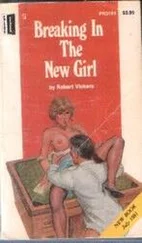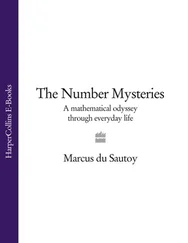Instances of the Number 3
Salley Vickers

For Rupert Kingfisher,
whose play The Prisoner’s Dilemma first suggested to me the creative possibilities in the number 3
It must have required many ages to discover that a brace of pheasants and a couple of days were both instances of the number 2: the degree of abstraction involved is far from easy…
BERTRAND RUSSELL
I doubt not of my own salvation; and in whom can I have such occasion of doubt as in my Self? When I come to heaven, shall I be able to say to any there, Lord! how got you hither? Was any man less likely to come hither than I?
JOHN DONNE, Sermon VIII, 371
Cover Page
Title Page Instances of the Number 3 Salley Vickers
Dedication For Rupert Kingfisher, whose play The Prisoner’s Dilemma first suggested to me the creative possibilities in the number 3
Epigraph It must have required many ages to discover that a brace of pheasants and a couple of days were both instances of the number 2: the degree of abstraction involved is far from easy… BERTRAND RUSSELL I doubt not of my own salvation; and in whom can I have such occasion of doubt as in my Self? When I come to heaven, shall I be able to say to any there, Lord! how got you hither? Was any man less likely to come hither than I? JOHN DONNE, Sermon VIII, 371
Preface Preface It is said there were ancient schools of thought which held that the number 3 is unstable. If the reasons for this belief were ever known they are lost in time. A three-legged stool refutes the claim, as—less prosaically—we are told does the Christian trinity. Whatever the case, it is a fact that three is a protean number: under certain conditions it will tend to collapse into two—or expand into four…
1
2
3
4
5
6
7
8
9
10
11
12
13
14
15
16
17
18
19
20
21
22
23
24
25
26
27
28
29
30
31
32
33
34
35
36
37
38
39
40
41
42
43
44
45
46
47
48
49
50
51
52
53
54
About The Author
Praise
Also by Salley Vickers
Preview
Copyright
About the Publisher
It is said there were ancient schools of thought which held that the number 3 is unstable. If the reasons for this belief were ever known they are lost in time. A three-legged stool refutes the claim, as—less prosaically—we are told does the Christian trinity. Whatever the case, it is a fact that three is a protean number: under certain conditions it will tend to collapse into two—or expand into four…
After Peter Hansome died, people were surprised that his widow seemed to be spending so much time with his mistress. Bridget Hansome was not the kind of woman who could have failed to notice her husband’s discreet, but regular, visits to the flat in Turnham Green where Frances Slater lived. And, indeed, anyone married to Peter Hansome would have needed to learn the art of turning a blind eye. Had the various friends and acquaintances of the Hansomes’ been asked to bet on how the wife might deal with a mistress discovered in the aftermath of the husband’s death (were it the thing to gamble on the likely effects on a widow of the discovery of a long-established infidelity), the odds would probably have been on Bridget allowing Frances to attend the funeral, but with an unspoken provision that no mention be made of the reason for her being there.
In the event the punters would have lost their bets for this is not what occurred. In spite of the fact that she lived nearby—the cremation was conducted at a cemetery off the Lower Richmond Road—Frances did not attend the funeral ceremony. She had a still lively recollection of a warm evening, on which the same cemetery had been the scene of one of Peter’s more flamboyant acts of lovemaking. Whether it was this, and the fact that she could not, therefore, easily reconcile herself to it as the place from which she must make a final farewell to the body that—flanked by marble angels and other funerary pieces—had lately enjoyed her own, must rest as one of those matters into which we shall not, for the moment, enquire. What is known is that on the day of the funeral, Frances took the Eurostar to Paris, where she concluded a walk by the Seine with a visit to Notre-Dame—stopping, before entering the cathedral, to buy a bunch of anemones from a flower seller.
Bridget Hansome was well aware that she was not the only woman to enjoy her husband’s affections. ‘Handsome is as handsome does!’ she had been in the habit of saying, making a small pun on her husband’s name. This observation was generally accompanied by one of her little ironic smiles. These smiles might have been described as affectionate, but they might equally have been described as sly. Whatever the truth of the matter (and it is also a truth that human emotion tends to be made up of different, and often competing, strands), Peter took the smiles in good part. He was a physically vain man and, not quite understanding the point of the saying—more accurately, for he was not stupid either, not really troubling to comprehend it—was mildly pleased to have a wife who appreciated his looks enough to joke about them, despite the fact that they brought with them certain consequences.
One of these ‘consequences’ was Frances. There had been others—not too many—over the years, but Frances was the only one who could be said to have stuck. In fact it was Bridget herself who had been the cause of the introduction, during one of her trips abroad.
Early on in her marriage Bridget had discovered that her husband disliked her being away from home. It is unlikely that Peter himself was aware that his extramarital escapades had more to do with an incapability with his own loneliness than the outward appearance he was quietly proud of—women tending, perversely perhaps, to be more susceptible to marks of inward frailty than rugged good looks. It is a fact, however, that it is easier to be tender towards a failing when it is not part of one’s daily dealings. Bridget had been first alarmed, then concerned and finally increasingly impatient when she found that Peter became fractious, and prone to what she privately termed ‘sillinesses’, when she made one of her regular trips abroad.
Bridget sold old French bric-à-brac. She had started with a stall on the Portobello Road but now ran a thriving shop in Fulham, which traded in garden furniture, aged linen, enamel pans, lace curtains, parasols—items of faded beauty from a French pastoral past for which she had a particular eye. In these days of shabby chic such shops are commonplace. But Bridget, in perceiving that something worn and traditional might be what was missing from modern lives, had been in the vanguard of contemporary taste. It was she who pioneered the belief that the venerable might be more stylish than the smart—the glass and steel designs which were once the height of interior fashion for the well heeled. Ahead of her imitators, she became established as a ‘name’, of sorts; the ‘Living’ pages of newspapers and magazines deferred to her for hints on the newest ‘old’ styles.
Bridget was also blessed with sources of supply for the items she sold in her shop—still-secret places in the heart of rural France which her later competitors had neither the luck nor the stamina to discover. The stamina was required for the combination of long drive and longer conversations in vernacular French, accompanied by large quantities of coffee or wine or, as the day went on, spirits drawn from complicated bottles. These tête-à-têtes would be conducted with elderly men or women in minor decaying châteaux, who were pleased to offload the mouldering relics of a bygone way of life to the blonde Anglaise who seemed sincere in her love of their country and its artefacts.
Читать дальше













